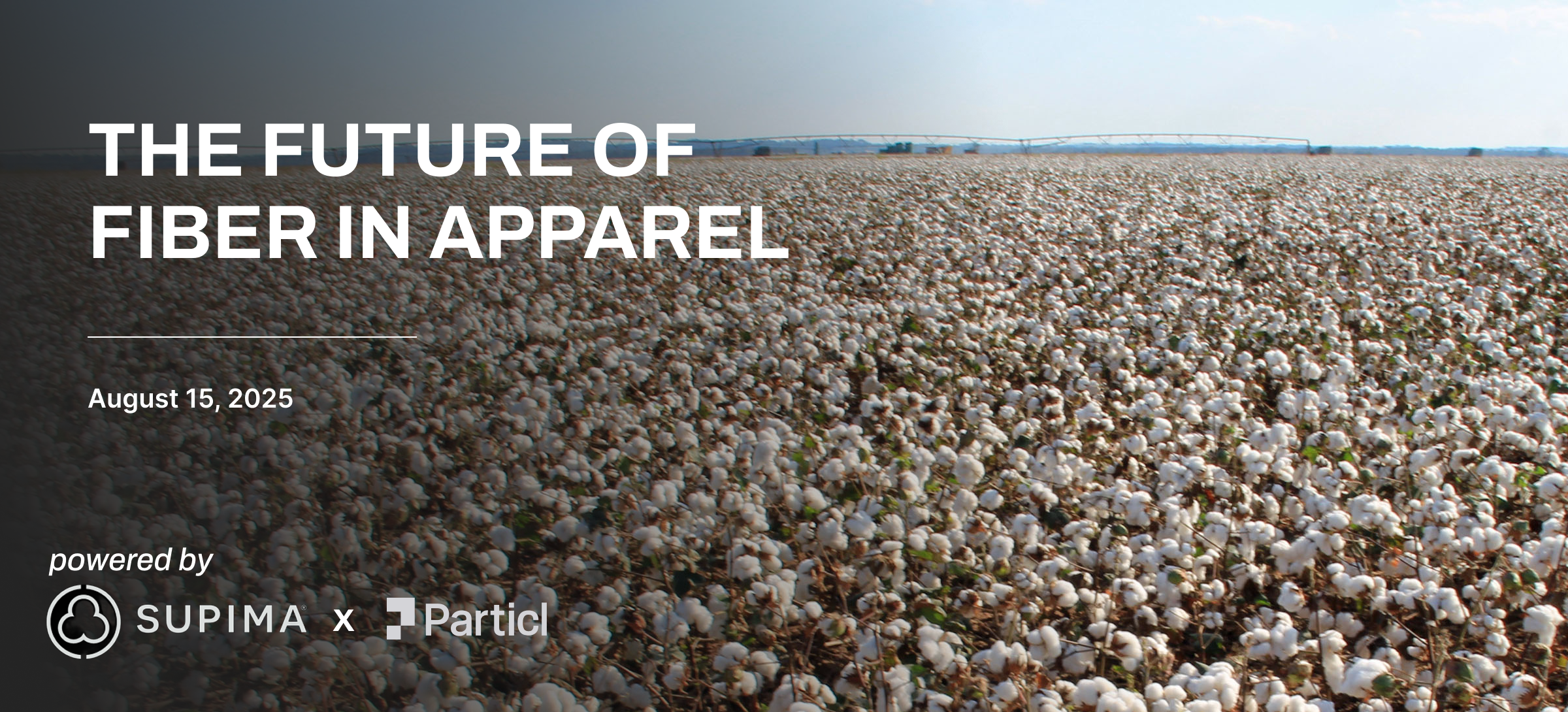Particl Awards: Best Price Increases

Introduction
Tariff pressure has hit categories like luggage, eyewear, and cookware particularly hard in 2025, pushing many brands to raise prices in order to protect margins. For most, higher prices come with the risk of slowing demand. Yet a select few have managed to push through increases without losing ground on sales volume or revenue.
This edition of the Particl Awards highlights three standouts: Tumi in premium travel goods, Persol in luxury eyewear, and Caraway in DTC cookware. Each raised prices this year yet maintained or improved performance, proving that when brand equity and product strategy are strong, tariff-driven pricing power can be turned into a growth lever rather than a drag.
Tumi
In 2025, Tumi has raised average full prices steadily from $489 in January to $785 by August. Instead of slowing demand, sales volume actually grew compared to 2024. Year-to-date 2025 sales surpassed 615K units, up from 573K units during the same period last year. Revenue growth followed the same trajectory, driven by core travel styles that remain essential for frequent flyers.
Tumi’s ability to hold pricing power while expanding volume underscores its positioning as a durable premium brand. The combination of product quality, loyal business travelers, and a clear value story made its price increase a success.
Tumi.com Avg Full Price (YTD 2025)
Monthly average full price of products on Tumi.com (USD)
Tumi.com Sales Volume Comparison (Jan–Aug)
Year-over-year sales volume comparison for Tumi.com (Jan–Aug)
Sales Drivers
Carry-on and expandable suitcases remained the core of Tumi’s business, driving the largest share of revenue. Backpacks gained momentum, with the Nomadic Backpack hitting $566K the week of June 15 and the Search Backpack consistently ranking near the top. Marketing events amplified performance. The NYC Poster Print Collection launch and Shanghai flagship celebration with Wei Daxun drove a $34.6M spike the week of August 3. Seasonal promotions and semi-annual sales added steady lift.
Pricing Strategy
Tumi held stable pricing on core products like carry-on suitcases (~$1,350) and travel backpacks ($559 Navigation, $775 Search) while testing small increases on secondary items. The Nomadic and Expedition Flap backpacks rose ~7% in July without slowing sales. Checked suitcases also expanded, climbing from $546K in late June to $738K in late July at a consistent $1,589 price point. The strategy shows how price stability on flagships plus targeted adjustments elsewhere preserved growth.
Persol
In 2025, Persol steadily raised average full prices from $382 in January to $405 by July. Despite higher prices, demand strengthened. Year-to-date 2025 sales volume reached 107,571 units, up from 88,365 units during the same period in 2024 — a 22% YoY increase. Sunglasses remain the revenue engine, supported by new launches and strong brand storytelling around heritage models.
Persol’s ability to implement price increases while expanding sales volume highlights its pricing power in luxury eyewear, especially under tariff pressure.
Persol.com Avg Full Price (YTD 2025)
Monthly average full price of products on Persol.com (USD)
Persol.com Sales Volume Comparison (Jan–Aug)
Year-over-year sales volume comparison for Persol.com (Jan–Aug)
Sales Drivers
Sunglasses accounted for over 94% of revenue, with the Steve McQueen series driving standout performance. The launch of the 714SM Limited Edition ($778) in May quickly propelled it to a top-seller. Follow-on launches, including the Series 001 in Terra di Siena and the Milan celebration in June, sustained momentum. Email campaigns and exclusive offers, like the Father’s Day promotion (June 3) and 20% community discounts (June 30, July 5), added consistent lift. New seasonal collections, including the Spring/Summer 2025 lineup on July 7, kept the catalog fresh.
Pricing Strategy
Persol’s strategy combined stable pricing on core sunglasses with premium positioning for exclusives. Flagship models like the PO3152S and 649 Original saw modest price bumps (~$15 each) and held their top-seller status. The 714SM Steve McQueen launched at $778, validating appetite for premium pricing in limited editions. Other models, such as the PO3310S Jean, rose from $370 to $393 and maintained strong sales. Overall, Persol demonstrated that stable pricing on volume drivers plus premium pricing on exclusives can grow both revenue and volume in a tariff-heavy market.
Caraway
In 2025, Caraway increased average full prices from $112 in January to $134 by July. Despite higher prices, sales volume more than doubled YoY. Year-to-date 2025 sales reached 542K units, compared to 252K units during the same period in 2024 — a 115% increase. Revenue followed the same trajectory, fueled by cookware sets and strong promotional campaigns.
Caraway’s ability to push through tariff-driven price hikes while scaling demand highlights the strength of its DTC model and brand positioning in the premium cookware market.
Caraway.com Avg Full Price (YTD 2025)
Monthly average full price of products on Caraway.com (USD)
Caraway.com Sales Volume Comparison (Jan–Aug)
Year-over-year sales volume comparison for Caraway.com (Jan–Aug)
Sales Drivers
Caraway kept demand high in 2025 by leaning heavily on seasonal promotions and partnerships. Summer campaigns like the Beach Bag Giveaway and cross-brand collaborations with names like Spindrift and Chomps helped the brand reach new customers and create buzz around its core cookware. July was especially strong, with Prime Day and the Summer Kitchen Refresh Sale anchoring sustained growth. Throughout, Caraway relied on its Kitchen Tools & Utensils line as the steady revenue driver, using limited-time promotions and community giveaways to layer incremental volume on top.
Pricing Strategy
Rather than sweeping changes, Caraway used a measured pricing approach. Core products like the Fry Pan and Mini Fry Pan saw small step-ups in price mid-summer, but remained affordable enough to stay attractive. These modest increases were paired with promotional events, ensuring that higher prices did not deter buyers. At the same time, premium items like the Stock Pot were tested with slightly higher pricing, which consumers accepted. The balance of stable hero product pricing, selective increases, and well-timed promotions allowed Caraway to maintain momentum and even expand sales volume while prices trended up.
Key Takeaways
Tariff pressure has forced many brands to raise prices in 2025. The experience of Tumi, Persol, and Caraway shows that it is possible to protect margins without losing momentum, but only with a disciplined approach. For brands facing similar challenges, a few practical tactics stand out:
-
Anchor pricing power in brand equity: Tumi and Persol can raise prices because they have built credibility over years of consistent quality and loyal customer relationships. Brands should invest in product durability, design, and trust long before they need to rely on higher prices.
-
Balance stability with selective tests: Holding prices steady on hero products maintains customer confidence, while small, well-timed increases on secondary SKUs or exclusives (such as Caraway’s fry pans or Persol’s Steve McQueen series) add incremental revenue without putting overall demand at risk.
-
Use promotions with purpose: Seasonal events, limited-edition launches, and thoughtful partnerships can sustain growth, but overuse of discounts undermines brand value. Promotions should reinforce positioning and create moments of engagement, not serve as a default lever.
In periods of tariff-driven cost pressure, maintaining volume alongside higher prices depends on brand strength, selective pricing discipline, and careful use of promotions. Brands that protect their identity and avoid shortcuts are better positioned to grow even as costs rise.

